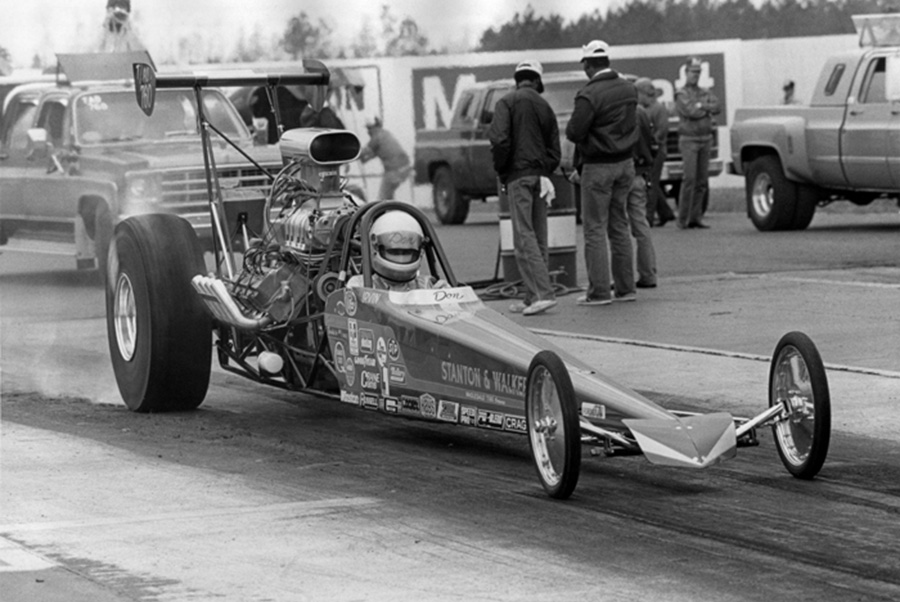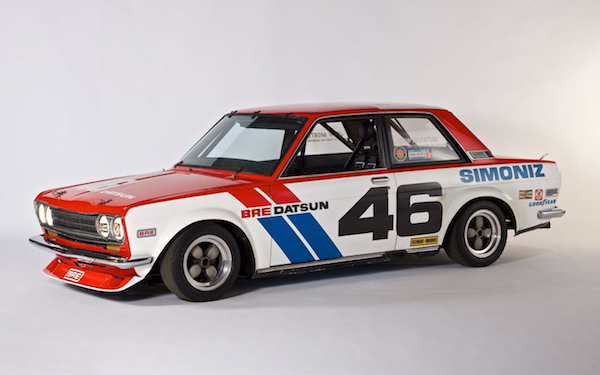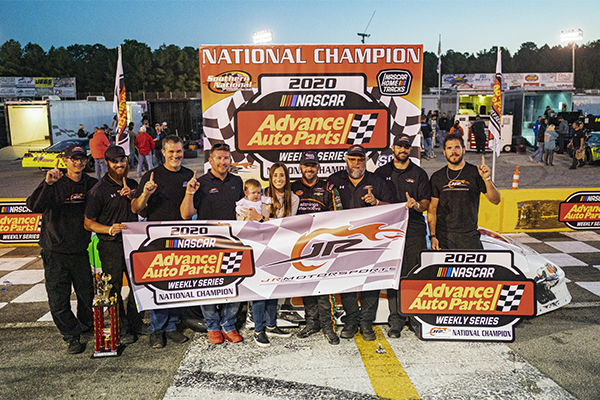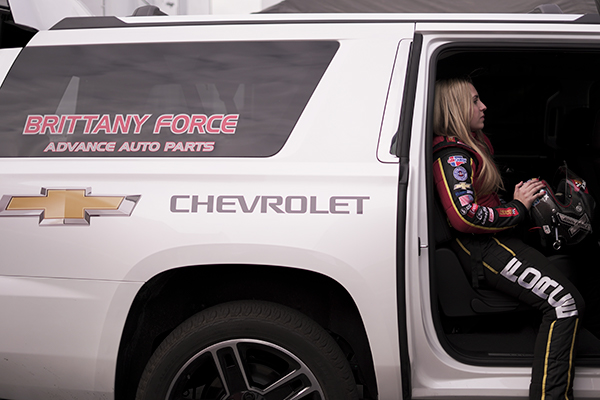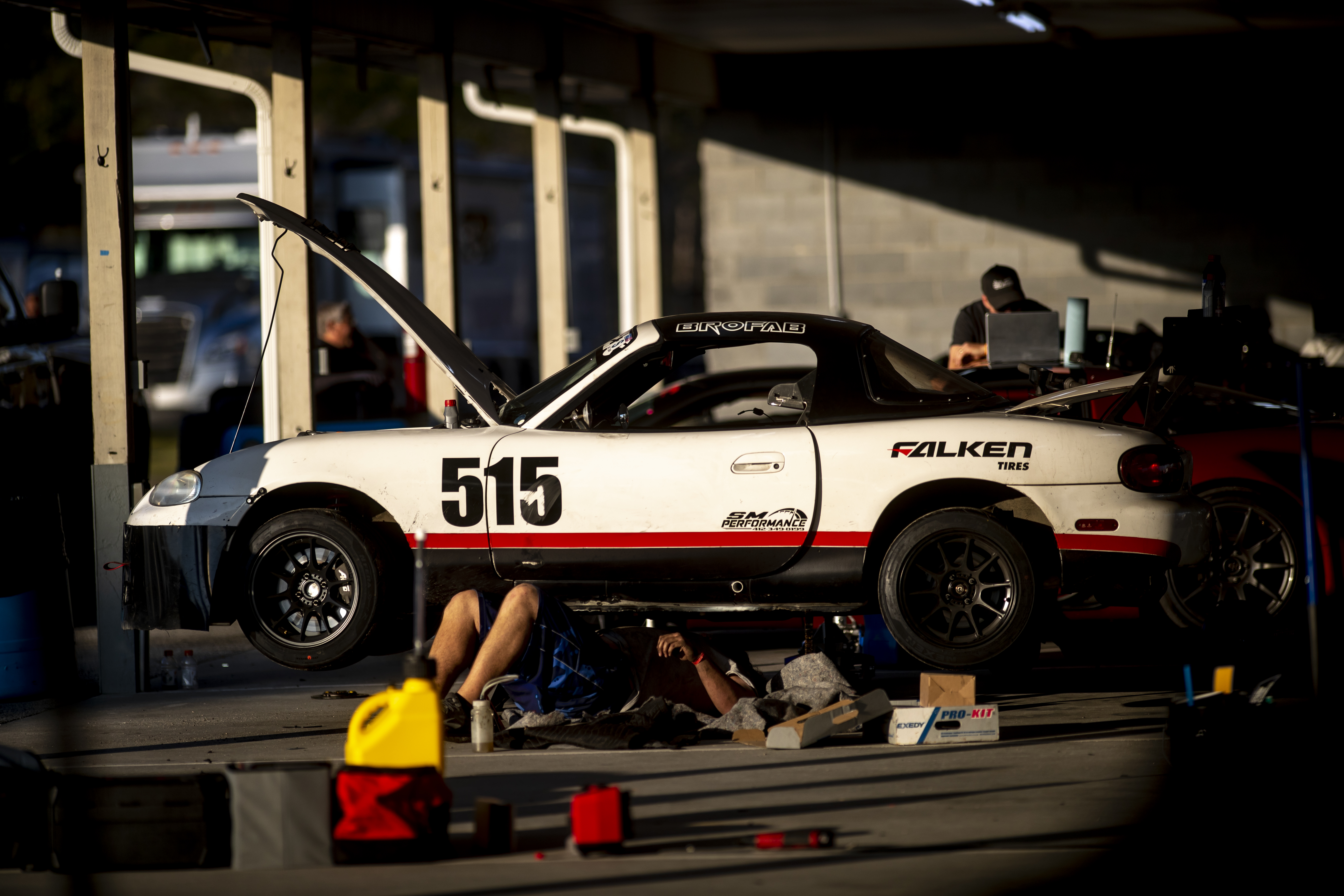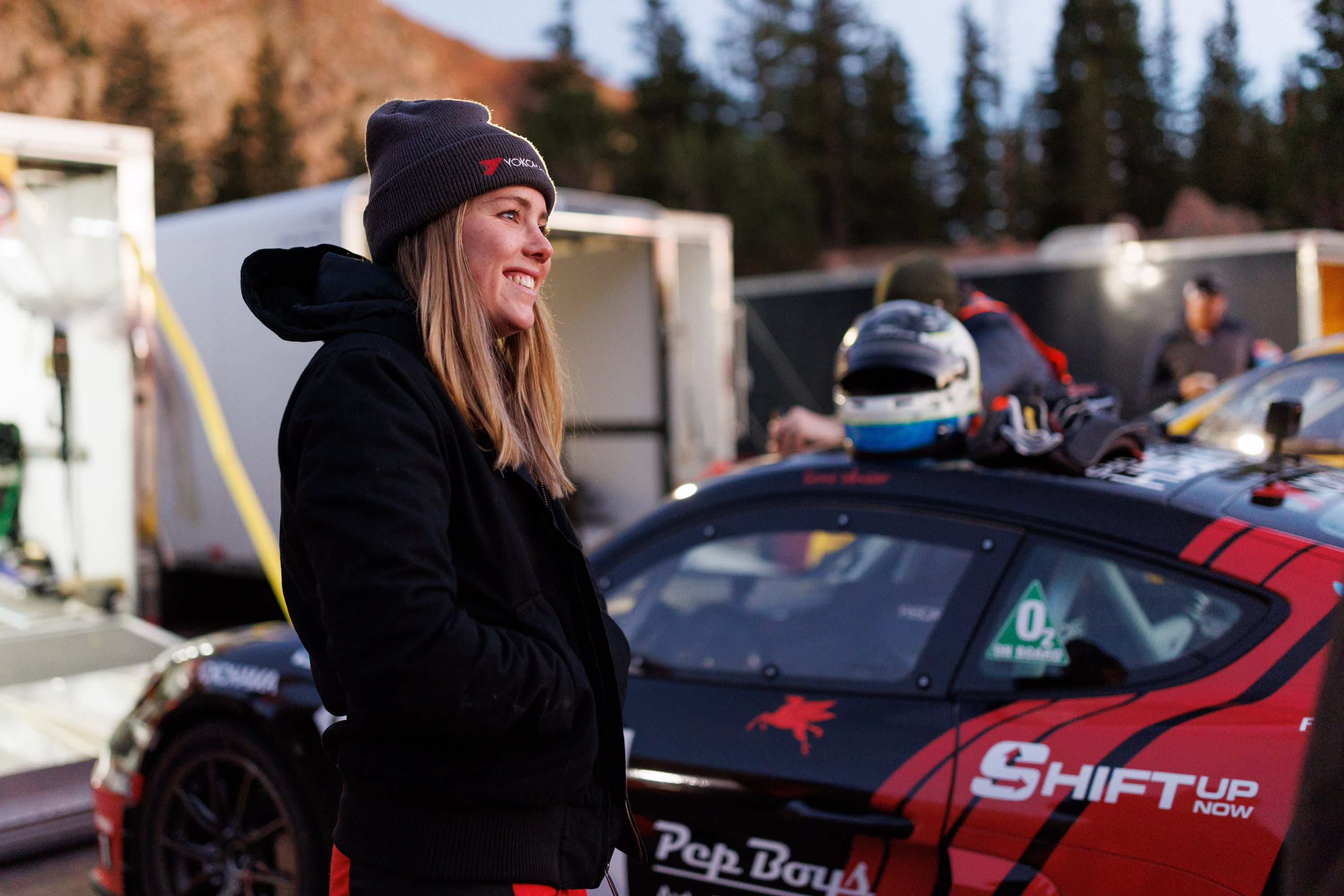When you're recounting the history of American performance cars in the 20th century, few names loom larger than Carroll Shelby. Over the course of his life, Shelby wore many hats as a driver, designer, entrepreneur and author. He is most commonly associated with Ford, but there's a lot more to Shelby's record than that.
Born in East Texas in 1923, Shelby's family moved to Dallas in the '30s, where he attended Woodrow Wilson High School. He had plans to attend the aeronautical engineering program at Georgia Tech, but WWII changed all that. Instead, he ended up enlisting in the Army Air Corps at San Antonio Aviation Cadet Center (later Lackland AFB), where he became a test pilot and flight instructor for the AT-11 Kansan and Curtis AT-9. Before his time in the military was through, Shelby qualified for a number of different aircraft, including the B-25, B-17 and B-29. He attained the rank of Second Lieutenant before being mustered out of the military at the war's end.

Racing Career
After the war, Shelby soon got married and started a family. He bought a dump truck and tried his hand as an independent trucker, then started a chicken ranch that soon failed when his second batch of chickens was decimated by a virus.
It would make sense that a former Air Force pilot would have a need for speed, and Carroll Shelby soon got a hot rod Ford for quarter-mile racing. A little ways down the line, he found himself an MG-TC and won his first road race, beating much faster cars (including even a Jaguar XK 120). It was soon obvious that Shelby had an aggressiveness and a control of the vehicle that allowed him to outdo drivers in more powerful cars, and in '53 he switched to an Allard as his number-one vehicle. The Allard was more powerful than an MG T-type, but still wasn't in the same class as what some of his rivals were pushing.

It didn't much matter, though. The following year, only two years after he kicked off his racing career, he placed in the top 10 of a 1000-km race in Buenos Aires. Considering that he was competing against drivers in Aston Martins, Ferraris and Jaguars, it was a pretty impressive feat. It's worth noting here that Allards were small British boutique-manufacturer cars that were powered by big American overhead-valve V8s from Mercury, Chrysler and Cadillac, and served as the inspiration for Shelby's famed AC Cobra.
His prowess with the Allard caught the attention of Aston Martin, and A-M's team manager asked Shelby if he would co-drive one of their cars in an upcoming race. He accepted the offer and went to Europe for the first time, and as the '50s wore on he got behind the wheel of Maseratis, Ferraris and Austin-Healeys. Shelby set 16 speed records at the Bonneville salt flats in a supercharged A-H 100S and set a record in the Mount Washington Hillclimb, driving a Ferrari 375 roadster. He did Formula One racing and pinnacled his driving career in '59 when he won the 24 Hours of Le Mans, driving an A-M DBR1.
His notoriety was enough for Sports Illustrated to name Carroll Shelby as Sports Car Driver of the Year for '56 and '57. Sadly, his racing career ended in 1960 when he began to develop chest pains, due to a congenital heart problem. He retired from racing permanently at the age of 37.
Carroll Shelby and Automotive Performance.
His racing career may have been over, but Shelby was far from being out of the game. His time on the tracks driving Ferraris, A-M's and Maseratis made a real impact on him. Shelby loved the workmanship, performance and handling of those European cars, but was not a fan of the complex, expensive, finicky engines that needed continual maintenance and repair to stay running in proper tune.
He had driven Allard models in the past (as had Corvette innovator Zora Duntov) and was fixated on the idea of a sports car that could offer European-style handling and road manners, except with a big American V8 stuffed under the hood. The idea was to develop a sports car that could easily be serviced by a dealership or garage, and at a price that was half that of its European counterparts.
The AC Cobra

In the early 60s, British manufacturer AC Cars was producing the AC Ace, a handsome little roadster with a lightweight steel-tube frame and aluminum body. It was powered by the Bristol straight-six engine, a dated design that offered lackluster performance. Bristol ceased production of this engine and AC started using Ford's Zephyr engine instead. Shelby approached the company to gauge their interest in producing a car that could be fitted with an American V8. AC was receptive to the idea, as long as the right engine could be found. Chevrolet gave a thumbs-down, as they didn't want to help out on a car that could be competition for the Corvette.
Ford, on the other hand, needed a car in that category and offered up their 221 c.i. Windsor V8, which was then bored out to 260 c.i.. The AC Ace that had been modified for the Ford Zephyr inline 6 was practically tailor-made for a small-block V8, and one of the few modifications needed was a stouter differential that could handle the extra torque. Shelby American was formed in California, refitting the cars with 260 (and later 289) V8s.
A few other modifications were cobbled together, such as a steering rack from the MGB and steering column from the VW Beetle. Cobras made their way to Ford dealerships, and before long Cobras were regularly trouncing Corvettes on the tracks.
Shelby experimented with Ford's FE 390 c.i. big-block V8 in the Cobra, with little success. A new chassis was developed, in cooperation with Ford, and the 427 side-oiler V8 was shoehorned into the car. With 425 hp (in a 2,355 lb car), it was a phenomenal performer with a top speed of 165 mph.
In '65, the Cobra won the World Manufacturers' GT championship, beating out Ferrari, Lotus, Maserati and all European makes. That's a feat that no American manufacturer has pulled off, before or since.
Sunbeam Tiger
About the same time as the Shelby Cobra was coming to fruition, Shelby partnered with Rootes Group for a high-performance version of the Sunbeam Alpine roadster. Legend has it that Rootes' West Coast sales manager wanted to goose the performance of the Alpine and sent his service manager around to dealerships with a tape measure, trying to find other engines that could fit under the Alpine's hood.
The stylish little sports car was a perfect recipient for a 164 hp Ford 260 V8, and later a high-performance Ford 289, although the V8 engine was a tight fit. Sunbeam Tigers ended up having great road manners and handling, despite the extra weight of the engine over the front wheels, and even made it into pop culture as Agent Maxwell Smart's car in the 60s TV show Get Smart.

It was quick and fun to drive, with nicer interior appointments that made it a lot more comfortable and accommodating than the AC Cobra. Unfortunately, the Sunbeam Tiger didn't have a very long run. Rootes Group was acquired by Chrysler Europe; understandably, Chrysler wasn't enthused about handling a car with a Ford engine. With no Chrysler engine that could work, the model met its demise.
Shelby GT350 and GT500

The Ford Mustang took the automotive world by storm in the mid-60s, and this sporty, lightweight coupe was the perfect platform for Carroll Shelby's high-performance plans. The GT350 package debuted in '65, as a Mustang with the 289 V8, 4-barrel Holley carb, high-rise intake manifold and headers for 300-plus horsepower. The GT350 cars featured larger Ford Galaxie rear drum brakes, Kelsey-Hayes disc brakes in front and a 4-speed transmission; the first models were built for SCCA track use and were B-Production champions for three years running. Subsequent years of GT350s offered more options for casual drivers, and the GT350 was offered through '69. For model year 1968, the 289 was phased out and replaced by a rather tame Ford 302 V8.
Stripes and taillights lifted from the Mercury Cougar made the Shelby Mustangs stand out a bit more, but they also lived up to their promise with features like functional brake cooling louvers, a tighter suspension and a limited-slip differential. Some GT350s were even equipped with Paxton superchargers, yielding a ground-shaking 440 horsepower.
In '67, the GT500 made its debut, with Ford's 428 c.i. Police Interceptor engine, two 600 CFM Holley four-barrel carbs and a mid-rise aluminum intake manifold under the hood. The first editions delivered 355 horsepower and 420 lb-ft of torque and were capable of a 15-second quarter mile. One was even equipped with Ford's 427 GT40 racing engine, producing 650 horsepower and capable of well over 150 mph. The Shelby GT package also included dual exhausts, a fiberglass hood, deck lid, taillight panel and side scoops.
The Shelby GT350 and GT500 continued through 1970, but in '69 Shelby's agreement with Ford was over and the cars were Shelbys in name only. The car was revived in '05, though, with Shelby and Paxton teaming up for a 350 hp supercharged version of the Mustang's V6. The model also featured dual exhaust, 20" Shelby wheels, a 2" drop in ride height and 14-inch brakes all around. The CS8 model also debuted, as well as the GT-H version (only available as a Hertz rental). The GT-H was decked out with the Ford Racing Handling Pack, low-restriction mufflers and a cold air kit for an additional 25 horsepower. The name continues in this generation of Mustang with various GT, GTS, GT350 and Terlingua packages, with as much as 624 horsepower under the hood.
The “Retired" Years
By the early '70s, Carroll Shelby was ready to move on to other pursuits. He launched the Shelby Wheel Company, producing performance wheels for a range of vehicles, and expanded his interest in a Goodyear distributorship that supplied race tires. Being a Texan, he loved spending time at his East Texas ranch, raising Kobe beef cattle and relaxing with his grandkids. As a Texas native, he also had a passion for chili and started the Terlingua International Chili Championship in the namesake ghost town. The Chili Championship was a hit, and his own chili recipe was so popular that he started a company around it and soon Carroll Shelby Chili was selling everywhere.
Shelby also spent a lot of time in Africa during these years, sometimes for months at a stretch. The culture, wildlife and landscape gave him the perfect opportunity to relax, reflect and think about what his next steps might be. And his next step was…
Shelby and Dodge

You might remember that Lee Iacocca was one of the driving forces behind the Ford Mustang, and Iacocca and Shelby became great friends in the '60s when the Cobra and Shelby Mustang programs were big. Iacocca was the turnaround artist that saved Chrysler from oblivion in the late '70s, and by '82 he wanted to put Dodge back on the map as a performance brand.
Enter Carroll Shelby.
Before long, the Shelby Charger and Omni GLH (Goes Like Hell) debuted as pocket-rocket performance cars. With tightened suspensions and turbo 2.2L 4-cyl engines, they were very quick for the '80s and were fun, affordable, economical hotrods.
The GLH was followed by the limited-production GLHS, with an intercooled turbo, 12 psi of boost and custom manifold and acceleration that rivaled a 60s muscle car. The boxy, unassuming Omni made the perfect platform to build a sleeper, and now surviving GLHs are pretty rare and desirable.
Shelby's time at Dodge resulted in 22 different models enhanced with the Shelby treatment, including the Shelby Dakota V8 pickup and the CSX, with an innovative variable-nozzle turbo and the first-ever composite wheels on an American car. All the Shelby models were complete cars, with suspensions, exhausts, brakes, tires and wheels that were tuned for the performance that came with those engines. Before his years at Dodge were over, Shelby helped design and tune the Viper, the radical 90s-era sports car that put Dodge squarely back in the muscle car arena.
The Carroll Shelby Foundation
Carroll Shelby's lifelong heart problems resulted in a heart transplant late in life, and his experience made him sympathetic to anyone who was going through those kinds of problems. In '91, he established the Carroll Shelby Children's Foundation, a charity that was devoted not only to medical assistance but also established scholarships and programs for students going into the automotive field. The Foundation offered financial help as well as finding donors for those needing a heart transplant.
Carroll Shelby passed away in 2012, but left behind a legacy in the automotive world that will far outlive him.
What are your experiences with Shelby's legacy? Is it those weekend muscle car drives, the dream of owning an AC Cobra, or simply your love for chili? Let us know in the comments.

